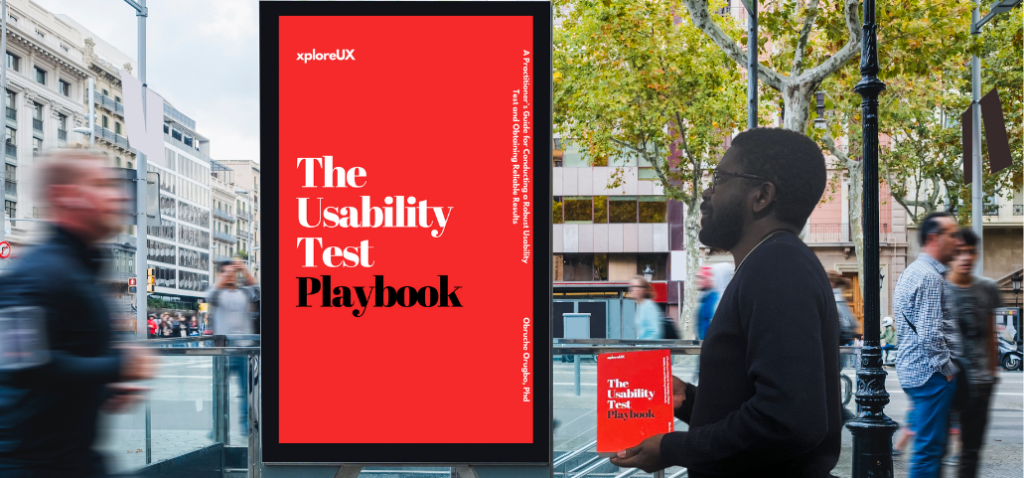
With the rise of AI, the competition for customer attention has reached new heights. But fear not, fellow entrepreneur! While AI can be a powerful tool for established businesses, it also presents a unique opportunity to level the playing field. As a business owner, you can enhance your success by embracing strategic tactics and understanding user behavior to transform your website into a customer magnet. In this article, we will explore nine data-driven strategies to captivate your target audience and propel your website toward success.
Firstly, leveraging UX consulting can significantly optimise your website by enhancing user experience and ensuring visitors have a seamless, engaging journey. Remember, content is king and queen, so consistently creating high-quality, relevant content is crucial for attracting and retaining visitors. Additionally, embracing SEO strategies can dramatically increase your website’s visibility, driving more organic traffic your way.
One critical strategy is to embrace user-generated content to amplify your brand’s authenticity and trustworthiness. These are just a few strategies; in this article, I will detail nine effective approaches I have studied to attract customers to your business website in the age of AI.
So, let’s dive deeper into each strategy and unlock the secrets to captivating your audience in this competitive digital era.
Your website often serves as the first point of contact between your business and potential customers. Therefore, ensuring an optimal user experience (UX) is critical. One effective way to attract and retain more customers is by engaging a UX consultant to enhance your website’s usability and overall experience. Here’s how a UX consultant can make a significant impact:
Understanding User Behavior: A UX consultant begins by conducting thorough research to understand your target audience’s behavior, preferences, and pain points. They utilise various tools such as heat maps, user surveys, and analytics to gather insights into how users interact with your website. This data is crucial in identifying areas where users may be experiencing difficulties or dropping off before completing desired actions, such as making a purchase or signing up for a newsletter.
Improving Navigation and Information Architecture: One of the primary roles of a UX consultant is to streamline your website’s navigation and improve its information architecture. By organising content logically and simplifying the navigation process, a UX consultant ensures that users can easily find the information they’re looking for. This reduces frustration and increases the likelihood of users staying on your site longer and engaging more deeply with your content.
Enhancing Visual Design and Aesthetics: While functionality is key, aesthetics also play a crucial role in user experience. A UX consultant collaborates with designers to create a visually appealing website that reflects your brand identity and resonates with your audience. Consistent use of colors, fonts, and imagery can create a cohesive look and feel, making your site more attractive and inviting to visitors.
Optimising Mobile Experience: With the increasing use of mobile devices, ensuring a seamless mobile experience is essential. A UX consultant will assess and optimise your website’s mobile version, ensuring it is responsive and user-friendly across various devices and screen sizes. This can significantly boost your site’s accessibility and attract more mobile users, who may otherwise abandon a site that isn’t mobile-optimised.
Streamlining the Conversion Process: A crucial aspect of a UX consultant’s job is to simplify the conversion process. Whether your goal is to get users to make a purchase, fill out a contact form, or subscribe to a newsletter, a UX consultant will design clear and compelling calls to action/CTAs and minimise any friction points in the user journey. This can lead to higher conversion rates and ultimately more customers.
By investing in a UX consultant, you are investing in your customers’ satisfaction and loyalty. A well-designed, user-friendly website not only attracts more visitors but also converts them into loyal customers, driving sustained business growth.
In today’s tech-driven world, content reigns supreme. AI thrives on data, and the more valuable, informative content you provide, the higher your website will rank in search engine results. High-quality content is the cornerstone of any successful digital marketing strategy, acting as the primary vehicle for conveying your brand’s message, expertise, and value proposition to potential customers. By producing and sharing content that resonates with your target audience, you establish your website as a credible source of information and a trusted advisor in your industry.
Crafting compelling blog posts, articles, or infographics that address your audience’s pain points and offer practical solutions is crucial. Content should be tailored to meet the needs and interests of your audience, providing them with relevant, actionable insights that help solve their problems. For instance, if you run a fitness website, creating content about effective workout routines, nutrition tips, and mental health advice can attract and engage readers. These pieces of content not only educate but also build trust and authority, positioning your brand as an expert in the field.
Think of yourself as a trusted advisor rather than someone simply pushing a product. This shift in perspective helps create content that is genuinely helpful and valuable, fostering a deeper connection with your audience. When potential customers feel that you understand their challenges and are providing solutions without expecting immediate returns, they are more likely to return to your website and consider your products or services. This educational approach not only boosts your credibility but also enhances customer loyalty and trust.
Moreover, leveraging AI tools can significantly enhance your content creation process. AI can help analyse trending topics, optimise headlines, and suggest content improvements, ensuring that your material stays relevant and engaging. By combining AI’s analytical power with your industry knowledge, you can consistently produce high-quality content that attracts more visitors and keeps them coming back for more.
Search Engine Optimisation is the magic formula that ensures your website surfaces when someone searches for relevant keywords. It is a crucial component of digital marketing that helps improve your website’s visibility on search engine result pages (SERPs). By strategically incorporating SEO best practices, you can attract more organic traffic to your site, ultimately leading to higher conversions and increased brand awareness.
Conducting thorough keyword research is the first step in an effective SEO strategy. Utilise tools like Google Keyword Planner, SEMrush, or Ahrefs to identify the terms and phrases your target audience is using. Understanding these search queries allows you to tailor your content to meet the needs and interests of potential customers. Integrate these keywords naturally into your content, including in titles, headings, meta descriptions, and throughout the body text. However, it is vital to avoid keyword stuffing – overloading your content with keywords in a way that feels unnatural or forced can lead to penalties from search engines and a poor user experience.
Prioritising user experience is essential for successful SEO. Search engines like Google increasingly prioritise user-friendly websites that offer valuable, high-quality content. This means that your content should be informative, engaging, and relevant to your audience. Craft articles, blog posts, and other forms of content that answer questions, solve problems, or provide insights that are meaningful to your readers. High-quality content is more likely to be shared and linked to, further boosting your SEO efforts.
Additionally, consider the technical aspects of SEO. Ensure that your website is mobile-friendly, as a significant portion of web traffic comes from mobile devices. Optimise your site’s loading speed, as slow pages can frustrate users and lead to higher bounce rates. Use clean, organised URLs and include alt text for images to improve accessibility and search engine indexing.
By embracing a comprehensive approach to SEO that combines keyword research, quality content creation, and technical optimisation, you can significantly enhance your website’s visibility and attract more customers.
AI has revolutionised the concept of personalisation, enabling a level of customisation and user-specific targeting that was unimaginable just a few years ago. This advanced capability allows businesses to tailor their digital presence to meet the unique preferences and behaviors of each visitor, thereby creating a more engaging and relevant experience.
By leveraging sophisticated AI algorithms, you can gain deep insights into your audience’s demographics, preferences, and browsing behaviors through comprehensive website analytics. These insights are invaluable in understanding who your visitors are, what they are looking for, and how they interact with your site. This understanding forms the foundation for effective personalisation.
One of the most impactful ways to utilise this data is by tailoring your website’s content to meet the specific needs and interests of different user segments. For instance, if analytics reveal that a significant portion of your audience is interested in a particular product category, you can highlight related content, offers, and recommendations prominently on your homepage. This not only captures the visitor’s interest immediately but also guides them towards making a purchase.
AI-powered personalisation also extends to product recommendations. By analysing past purchase behavior and browsing history, AI can predict what products a visitor is likely to be interested in. This allows you to present personalised product suggestions that align perfectly with their tastes and needs. Such targeted recommendations significantly enhance the shopping experience, increasing the likelihood of conversions and repeat visits.
Personalisation can be applied to the overall layout and design of your website. Adaptive layouts that change based on user preferences or past interactions can make the browsing experience more intuitive and enjoyable. For example, if a user frequently accesses your site from a mobile device, an AI system could prioritise mobile-friendly design elements for that user.
The personalised touch fostered by AI doesn’t just enhance the user experience; it also builds a deeper connection between the visitor and your brand. When users feel that the website understands and caters to their individual needs, they are more likely to stay engaged, explore more content, and ultimately convert into loyal customers. This sense of connection and relevance is crucial in today’s competitive digital marketplace, where user experience is a key differentiator.
Providing immediate and efficient customer service is paramount. AI-powered chatbots have emerged as invaluable assets in this regard, functioning as round-the-clock salespersons that cater to the needs of your customers at any hour. These intelligent virtual assistants can handle real-time customer support and answer basic inquiries, which not only frees up your time but also ensures that potential customers receive the information they need promptly, even outside of regular business hours.
Developing chatbots that are both informative and engaging is crucial. A well-designed chatbot can interact with users in a way that feels natural and helpful, enhancing the overall user experience. These chatbots can be programmed to understand and respond to a wide range of queries, from simple FAQs to more complex product-related questions. By doing so, they guide users towards the resources they require, whether it’s a detailed product page, a helpful blog post, or a direct link to customer support for more specialised assistance.
The integration of AI-powered chatbots offers another layer of sophistication. These advanced chatbots are capable of learning and adapting over time, using data from previous interactions to improve their responses and provide increasingly relevant and helpful information. This continuous learning process ensures that the chatbot’s performance becomes more refined, enhancing customer satisfaction and engagement. By analysing user behavior and preferences, AI chatbots can offer personalised recommendations, anticipate customer needs, and create a more tailored browsing experience.
Moreover, the benefits of AI chatbots extend beyond just customer support. They can assist in lead generation by engaging visitors, asking qualifying questions, and directing them towards conversion paths. They can also gather valuable customer insights and feedback, helping businesses to understand their audience better and refine their marketing strategies accordingly.
In essence, AI-powered chatbots are not just tools for automation but strategic assets that can significantly enhance customer interaction, improve service efficiency, and ultimately drive more conversions for your website. Embracing this technology can give your business a competitive edge in today’s fast-paced digital environment.
Social media platforms have evolved into bustling marketplaces teeming with potential customers. These platforms are not just channels for communication but powerful tools for marketing, engagement, and conversion. To effectively harness the power of social media, it’s crucial to establish a strong presence on platforms that are relevant to your target audience. This involves understanding where your audience spends their time and what type of content resonates with them.
Once you’ve identified the right platforms, the next step is to share captivating content that grabs attention and encourages interaction. This could be in the form of informative blog posts, engaging videos, eye-catching infographics, or behind-the-scenes glimpses into your business. The key is to provide value and keep your audience interested and engaged. Consistency in posting and maintaining a cohesive brand voice are essential in building a loyal following.
Running targeted ads on social media is another effective strategy to attract more customers to your website. Platforms like Facebook, Instagram, and LinkedIn offer sophisticated targeting options that allow you to reach specific demographics, interests, and behaviors. By creating tailored ads that speak directly to the needs and desires of your target audience, you can drive highly relevant traffic to your website. Additionally, using A/B testing and AI-powered analytics can help refine your ad campaigns for maximum impact.
Active engagement with your audience is vital in building a community around your brand. Respond to comments, answer questions, and participate in conversations that relate to your industry. This not only humanises your brand but also builds trust and loyalty among your followers. Social media engagement is a two-way street – the more you interact with your audience, the more likely they are to become advocates for your brand and share your content with their networks.
Leveraging the power of social media to build brand awareness and foster connections ultimately drives traffic back to your website. By creating a dynamic and interactive social media presence, you can turn casual followers into loyal customers and significantly boost your online visibility.
Influencer marketing has emerged as a potent strategy to amplify your brand’s reach and engagement. This approach involves partnering with social media influencers who have a substantial and engaged following that aligns with your target audience. By leveraging the credibility and influence these personalities hold, you can enhance your brand’s visibility and authenticity.
Choosing the Right Influencers: The key to successful influencer marketing lies in selecting the right influencers. It’s crucial to identify those who not only have a significant following but also share your brand values. An influencer who genuinely aligns with your brand can communicate your message more effectively and authentically. This alignment ensures that the collaboration feels natural and relatable to the audience, rather than forced or purely transactional.
Creating Authentic Content: Collaborating with influencers goes beyond mere brand endorsements. The content created should resonate with the influencer’s audience in a genuine and relatable way. Consider co-creating content series that delve deeper into the influencer’s personal experiences with your product or service. Educational tutorials, for instance, can showcase the practical benefits of your offerings, while behind-the-scenes glimpses can provide an insider’s view of your brand. This kind of organic content fosters a sense of trust and authenticity, making your brand more relatable to the audience.
Building Trust and Authenticity: The power of influencer marketing lies in its ability to build trust. When influencers who are respected by their followers vouch for your brand, it carries a level of credibility that traditional advertising often lacks. This trust translates into higher engagement rates and, ultimately, more conversions. Authenticity is the cornerstone of influencer marketing. By allowing influencers to present your brand in their unique voice and style, you create a more genuine connection with their audience.
While some might claim email marketing is outdated, it remains a powerful tool for nurturing leads and fostering customer loyalty. The key to successful email marketing lies in building a robust email list. Offer valuable content in exchange for subscriptions; this could be in the form of exclusive guides, eBooks, webinars, or discount codes. Once you have an audience, the next step is segmentation. Segment your audience based on demographics, interests, and behavior to ensure your emails are tailored to the specific needs and preferences of each recipient.
Crafting personalised email campaigns is crucial. Generic, one-size-fits-all emails are less likely to engage your audience. Instead, create tailored content that speaks directly to your subscribers. Use segmentation to your advantage by sending targeted messages that resonate with each segment of your audience. For instance, a younger audience might appreciate emails with trendy product updates and social media integration, while an older demographic might value detailed product information and customer testimonials.
To keep your customers engaged, provide exclusive offers and early access to new products. This not only makes your subscribers feel valued but also fosters a sense of exclusivity. Additionally, share valuable industry insights and tips that can help your customers make informed decisions. This approach positions your brand as a trusted authority in your field and encourages subscribers to open and engage with your emails regularly.
Leveraging AI can take your email marketing to the next level. AI tools can analyse past purchases and browsing behavior to personalise email content. This allows you to recommend products or services that cater to each customer’s unique needs and preferences. For example, if a customer frequently purchases athletic gear, AI can suggest new arrivals or complementary products, significantly increasing the likelihood of conversion. This level of personalisation not only enhances the customer experience but also cultivates long-term relationships by showing customers that you understand and care about their individual preferences.
Everyone loves a good deal! Strategically implementing incentives like discounts, coupons, or loyalty programs can be a game-changer in attracting customers to your website. Discounts and coupons serve as powerful motivators, encouraging potential customers to take the plunge and make a purchase. By offering limited-time discounts or exclusive coupons for first-time visitors, you can create a sense of urgency and exclusivity, which can significantly boost your conversion rates.
Running contests and giveaways is another effective strategy to generate excitement and expand your reach. Contests and giveaways not only draw traffic to your website but also engage your audience, creating a buzz around your brand. Social media platforms are particularly useful for promoting these events, allowing you to reach a larger audience quickly. Ensure that the entry requirements are simple and the prizes are enticing to maximise participation.
A well-timed incentive can be the nudge a potential customer needs to convert. For example, sending a discount code to users who abandon their shopping carts can entice them to complete their purchase. Similarly, offering a free shipping promotion during peak shopping periods can make the difference between a sale and an abandoned cart.
Consider implementing tiered loyalty programs that reward repeat customers with increasing benefits. Such programs not only incentivise repeat purchases but also foster a sense of community and brand loyalty. For instance, customers could earn points for each purchase, which can be redeemed for discounts or free products. As they accumulate more points, they could move up to higher tiers with more exclusive rewards, such as early access to new products, special discounts, or even personalised offers.
Loyalty programs encourage customers to stay engaged with your brand over time. They not only increase the likelihood of repeat purchases but also help build long-term relationships with your customers. A well-designed loyalty program can transform casual shoppers into brand advocates who are more likely to spread the word about your business, further driving traffic to your website.
User-generated content (UGC) – testimonials, reviews, and social media posts featuring your products – is a powerful marketing tool. It builds trust and social proof, demonstrating the value your brand delivers to real customers.
Encourage user-generated content by running contests that prompt customers to share photos or videos featuring your products. Host hashtag campaigns on social media platforms, incentivising users to share their experiences with your brand. Showcase positive customer reviews and testimonials prominently on your website. By actively promoting UGC, you leverage the power of social influence and demonstrate the authenticity of your brand to potential customers.
Cultivating a Community: Beyond simply collecting UGC, take it a step further and foster a genuine community around your brand. Create a forum or social media group where customers can interact, share experiences, and offer peer-to-peer support. This fosters a sense of belonging and encourages brand loyalty. Actively participate in these communities, addressing customer concerns and demonstrating that you value their feedback.
Building Trust and Transparency: Remember, UGC is a double-edged sword. While positive reviews can be a boon, negative ones can tarnish your brand image. Develop a clear policy for handling negative feedback online. Respond promptly and professionally, acknowledging the customer’s concerns and offering solutions whenever possible. Transparency in addressing negative feedback builds trust and demonstrates your commitment to customer satisfaction.
Leveraging AI for UGC Optimisation: AI can further enhance your UGC strategy. Utilise AI-powered sentiment analysis tools to understand the overall tone of user-generated content. This allows you to identify areas where customers are particularly satisfied or dissatisfied, providing valuable insights to improve your product or service offerings. Additionally, AI can help personalise the user experience based on past interactions and UGC. For instance, showcasing product reviews or testimonials left by users with similar demographics or interests can create a more personalised and relatable experience for each visitor.
By implementing these nine strategies and embracing the power of AI, you can transform your website into a customer magnet. Remember, the key lies in understanding your audience, creating valuable content, and fostering genuine connections. In the ever-evolving digital landscape, these data-driven tactics will equip you to stand out from the crowd and build a thriving online presence.
While the strategies outlined above provide a strong foundation, the digital landscape is constantly evolving. Here’s a glimpse into some cutting-edge technologies that can further enhance your customer acquisition efforts:
Augmented Reality (AR) and Virtual Reality (VR): Imagine allowing potential customers to virtually try on clothes, test drive a car, or experience the ambience of a vacation destination – all from the comfort of their living rooms. AR and VR technologies are revolutionising the way users interact with products and services. By incorporating these elements into your website or marketing campaigns, you can create immersive experiences that captivate your audience and leave a lasting impression.
Voice Search Optimisation: With the rise of smart speakers and voice assistants like Google Assistant and Amason Alexa, voice search is rapidly becoming the preferred method for information retrieval. Ensure your website is optimised for voice search by including long-tail keywords and natural language phrasing in your content.
The Power of AI Personalisation: We’ve already touched upon the benefits of personalisation, but AI takes it to a whole new level. Leverage AI to personalise every aspect of the customer journey, from recommending products based on past purchases and browsing behavior to tailoring website content and layout to individual user preferences. This hyper-personalisation creates a seamless and engaging user experience that fosters brand loyalty and encourages repeat visits.
Remember, the key to success lies in continuous learning and adaptation. Stay informed about emerging technologies and explore how they can be integrated into your overall digital strategy.
Today’s digital landscape may be a competitive battleground, but with the right tools and strategies, you can attract new customers and build a thriving online presence. In an era where every click counts, it is crucial to stand out and offer unique value to your audience. Leveraging AI as a valuable partner can give you the edge needed to excel. AI’s capabilities in data analysis, personalisation, and automation allow businesses to understand customer behavior deeply and deliver tailored experiences that resonate on a personal level. This not only enhances customer satisfaction but also fosters loyalty, driving repeat visits and conversions.
Moreover, the power of content and community cannot be overstated. Creating high-quality, engaging content that addresses the needs and interests of your target audience is fundamental. Content serves as the bridge between your brand and potential customers, educating and inspiring them while establishing your authority in the industry. Community building, through social media and other interactive platforms, enables you to connect with your audience on a more personal level, fostering trust and encouraging word-of-mouth promotion. Engaged communities are more likely to become loyal customers and advocates for your brand.
Additionally, keeping an eye on the horizon for groundbreaking technologies is essential in staying ahead of the competition. The digital landscape is ever-evolving, with new tools and platforms emerging regularly. Staying updated with the latest trends and technologies ensures that your strategies remain effective and innovative. Whether it’s adopting new AI advancements, exploring the potentials of voice search, or experimenting with cutting-edge marketing tactics, being proactive in embracing new technologies can significantly enhance your online presence.
By implementing these strategies, you can transform your website into a customer magnet and propel your business towards long-term success. Embracing AI, leveraging content, and staying adaptive to new technologies are key to thriving in the digital age. With dedication and a forward-thinking approach, your online presence can not only attract new customers but also retain and delight them, ensuring sustained growth and success.





1 comment
Your words feel like a conversation with an old friend — intimate, thoughtful, and deeply human.